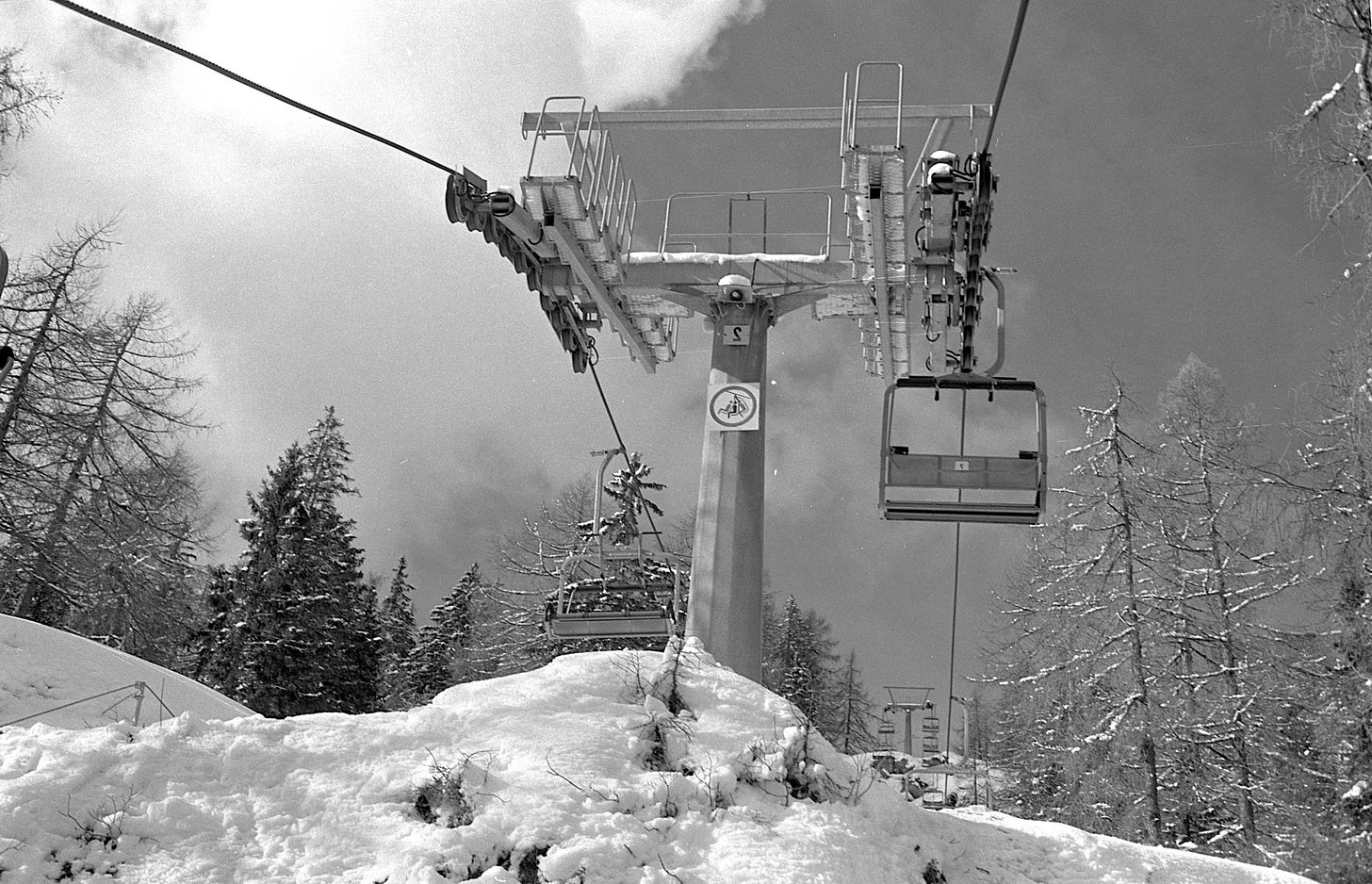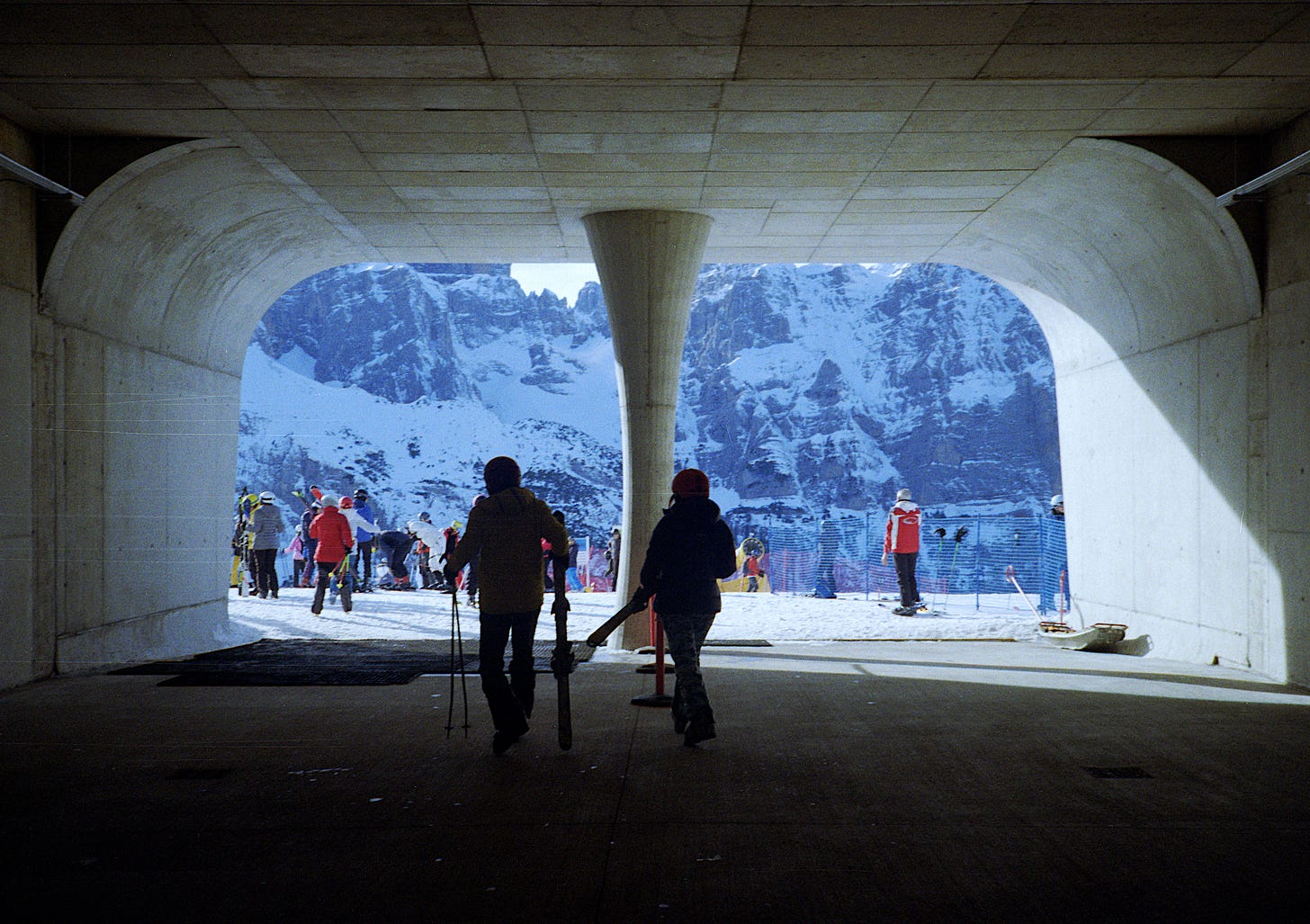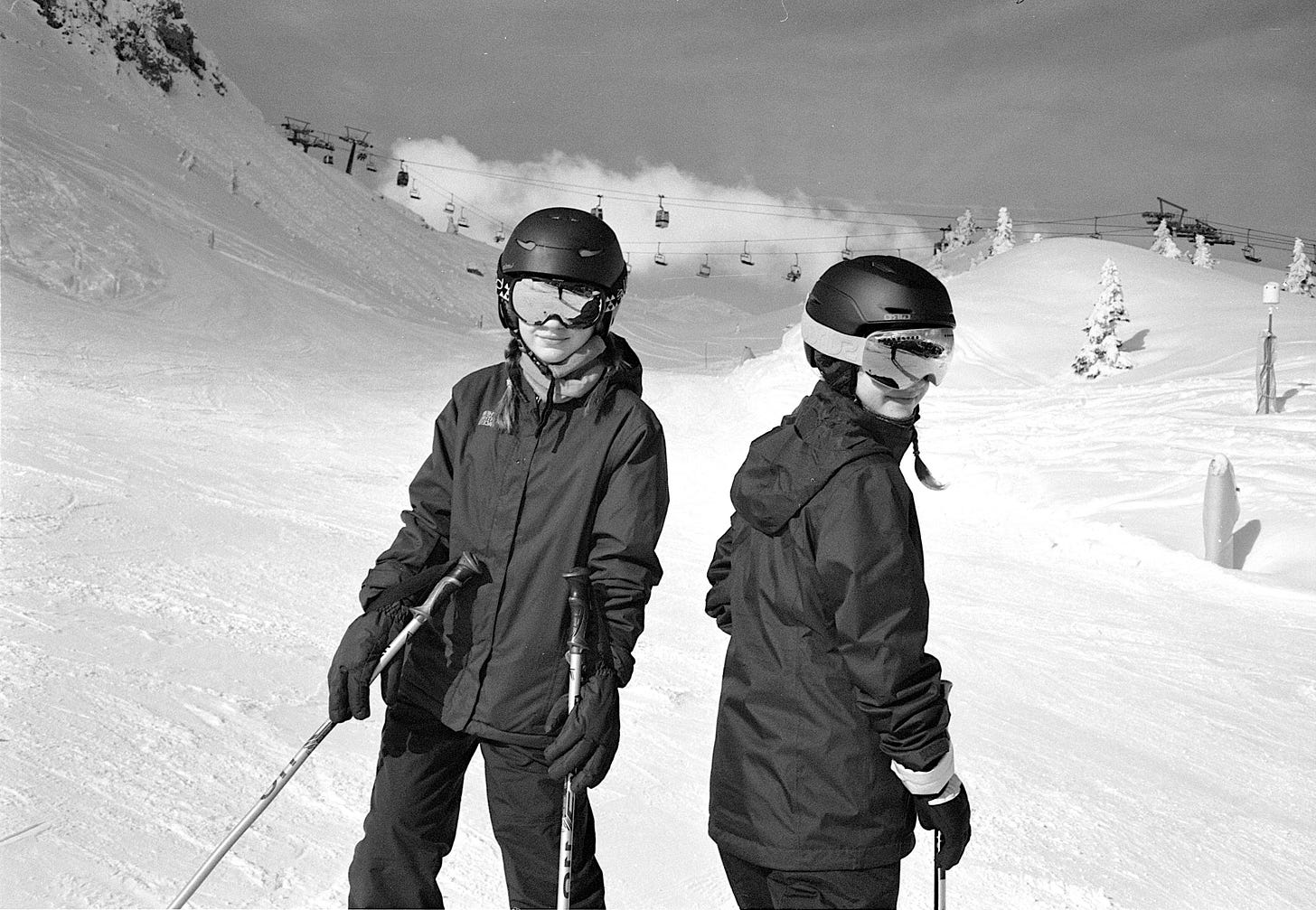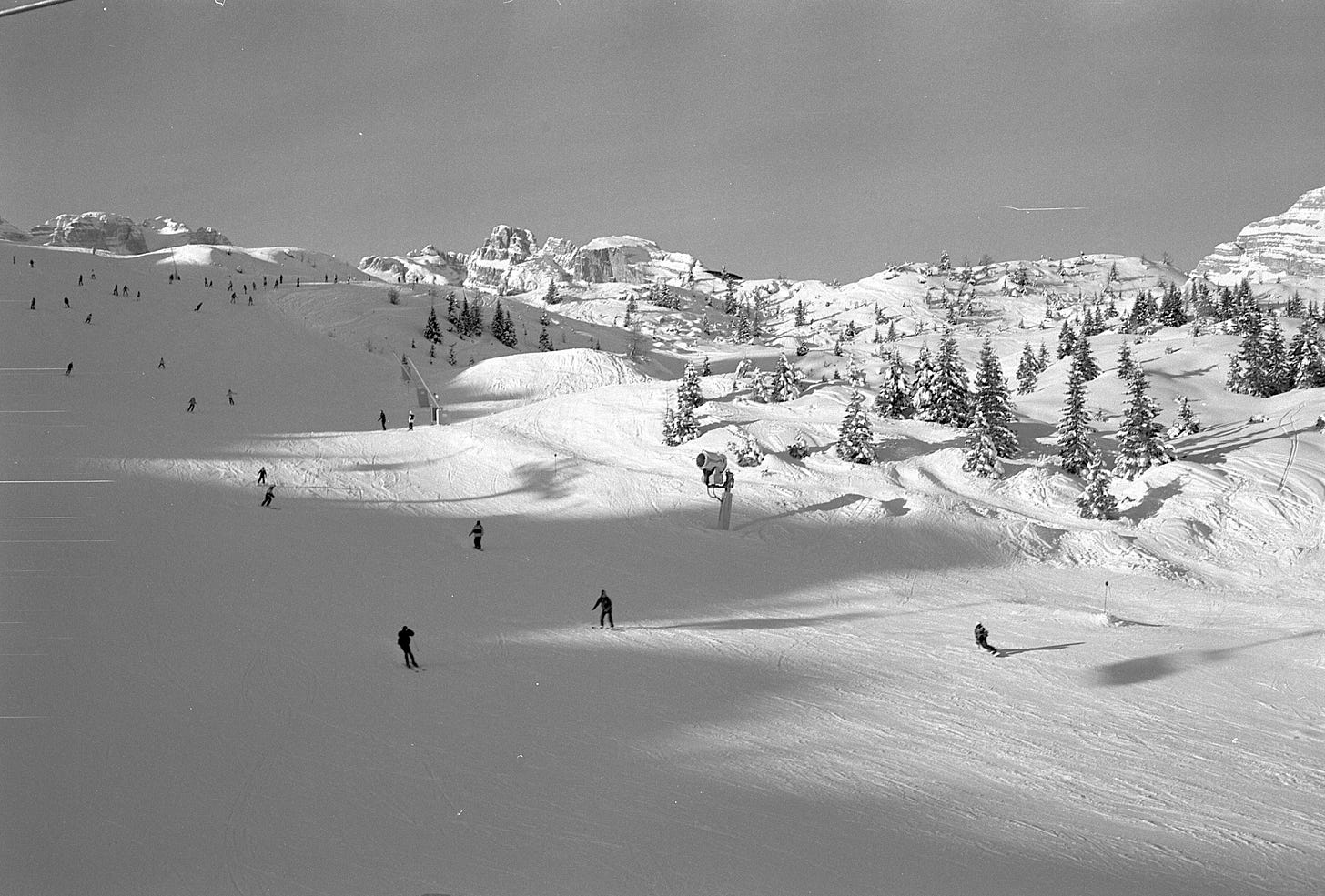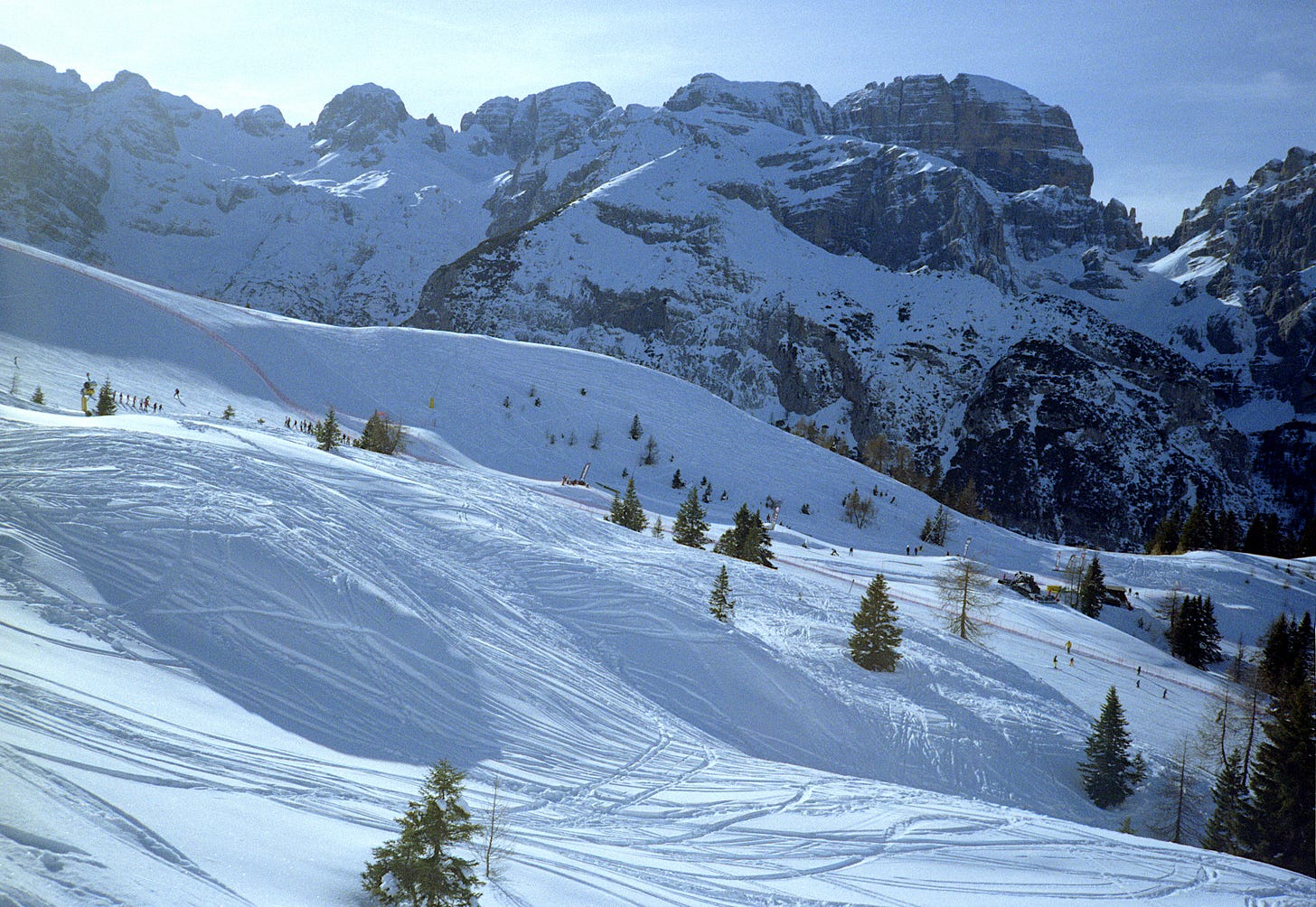Everyone should have a hipster hobby slash side hustle and mine is film photography. Look, it’s less messy than brewing my own beer or smoking my own brisket and occasionally it overlaps with my actual work. Also, it’s an expensive and time-consuming way to achieve a result which is arguably inferior to the pictures taken by my mobile. So, a perfect hobby.
My wife tolerates the two dozen eBay-bought 50s,60s and 70s cameras which clutter up the mantelpiece in the spare room.
Anyway, skiing. A particular set of circumstances for film photography. First, the practical stuff: you’re taking snaps, not agonising over composing the perfect shot and manually setting exposure. Especially when you’re with two teenagers who want to break the 100 kph barrier on a vertiginous black slope called “Little Grizzly.” And you’re wearing a lot of cumbersome kit.
So, having consulted Twitter, I took two small cameras (to use on different days). The cameras are a Vivitar 35ES (which is a not quite-clone of the rather more celebrated and far more expensive Konica S3) and a Yashica 35MC. Basically one has a great lens and the other is very small. They each cost about £50 on eBay (plus the £50 vintage camera servicing hipster tax).
They’re both automatic exposure. Again, less faff as this meant all I needed to do was focus. Better still, this is focussing on easy mode. Snow scenes tend to be very brightly lit which means apertures are small and depth of field is generous. As long as you’re somewhere vaguely near the right distance, you’ll be in focus.
I took two films: Fuji C200 – a fairly standard colour film and Ilford XP2, a black and white film which uses colour processing. The Vivitar was black and white, the Yashica colour, Interestingly, the internet told me you actually need to overexpose photos in snow. Which seems weird but is do with how the snow floods the sensor with light. So I set the film speed 1.5 stops lower than the speed on the box.
Anyway, out on the slopes the Yashica 35MC was the clear winner. The reason? Its size. It’s a proper pocket camera that you can carry without noticing. It’s very easy to pull out and snap with. The Vivitar, while still compact and easy to use, is noticeably bigger. It fits in a coat pocket, but it’s a bit heavy and awkward to get out. This is down to its relatively chunky lens (more of which later).
I used up the Yashica film in a day because it’s just so small and easy to use. The size of the Vivitar meant I had to think about taking it out and so the film lasted three days. So on holiday, I was 100% Team Yashica: I loved the little guy! The Vivitar by contrast felt a bit sad and clumsy.
But, when I got the photos back, I was forced to reconsider. In every single photo, you can see the extra quality that the Vivitar’s lens brings to the table. They’re just sharper, more contrasty and overall, well, better. Which is not to say the Yashica’s are bad. By themselves, they look pretty good, but next to the Vivitar’s they’re a bit lo-fi, like 1970s snapshots. So at the end of the day, Team Vivitar wins, unless that 70s holiday look is what you want.
While we’re at it, the Vivitar is a really great 35mm camera, if you want something that’s very good value (it’s not a coveted brand, like Olympus) and low fuss. I bigly recommend it. I just need to get a pouch for it because it’s not quite a pocket camera.
Now, black and white film for skiing might seem like a weird choice. And yes, you do lose the lovely, bright colours and the azure blue skies. But I really like black and white, even in situations where colour would seem the obvious option, like skiing and summer holidays. It makes everything look like your parents’ childhood. Also, it’s not as popular with hipsters (who prefer the Stranger Things look of colour film) which means it hasn’t doubled in price in recent years like colour film has.
On one of the last few days, I took my DSLR out. Of course, all the pictures I took with it are near perfect and cost me nothing. But it’s too way big. It’s a PITA to ski with because you have to get it out of a rucksack every time you want to take a photo. I also took many fine free and convenient photos with my phone (phone really are the modern pocket camera).
But I don’t like the hyperreal, ultraprocessed perfection of phone pictures. They don’t look real - there’s sort of uncanny valley via Instagram feel to them. But, that’s almost besides the point. The point with film is that you’re paying 60p a photo for something with slightly off colours and iffy focus because “it has a certain retro charm”. You’re paying for difficulty and imperfection and results that take a week. And that’s why it’s a perfect hobby.




